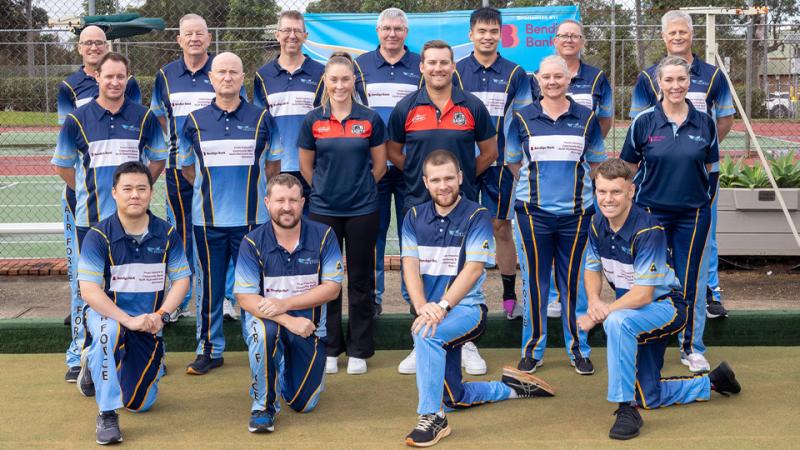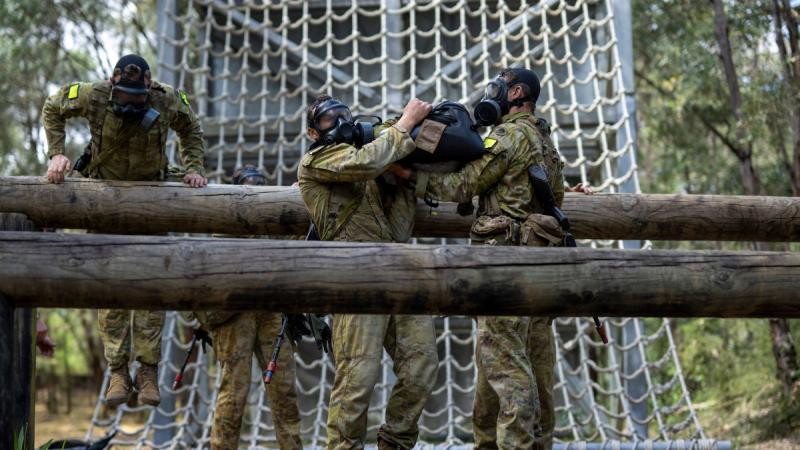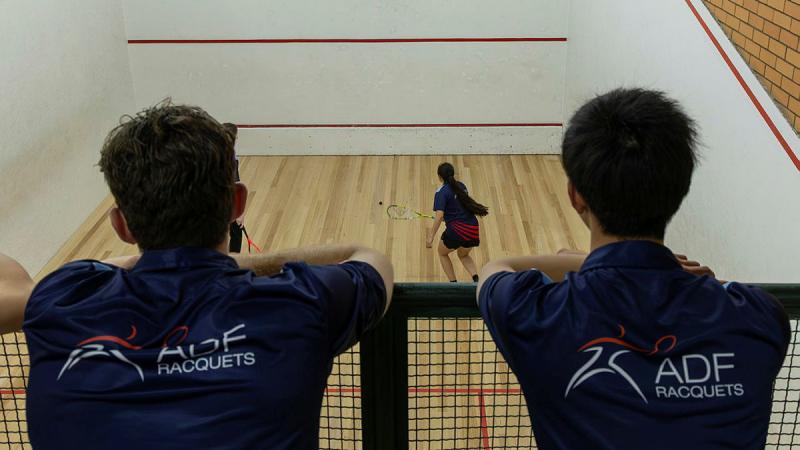15 October 2025
The smell of gunpowder and the crack of pistol fire hung in the air at Blacktown Pistol Club, as ADF shooters hit the mark at the Australian Police and Services Pistol Championship.
The annual event is open to serving and retired police or military, with teams and individuals aiming for top shot in the 90-round service match.
Defence fielded four teams in Division Two (military): Queensland Army, ACT Army, NSW Army and RAAF Combined.
Queensland Army scored highest with a total of 6453, ACT Army was second with 6152 and RAAF third with 5927.
RAAF also came third in the overall standings.
While the Army teams scored higher, some shooters used red-dot sights and those shots weren’t counted towards the overall standings.
Shooters fired from 50, 25, 10 and seven metres, in a mix of positions and alternating hands. Each attempt was scored out of 900, with bullseyes earning a maximum of 10 points.
Competitors were given two attempts, with their scores from both days combined, and team scores were calculated by tallying the top four individual results.
In the military individual category, Corporal Nigel Tegg, of the Urban Training Team, claimed first place, followed by Leading Aircraftman Bangguo Yin, of 23 Squadron, and Corporal Aaron Turner, of 8th/9th Battalion, the Royal Australian Regiment.
Corporal Tegg has competed in sports pistol shooting since age 17 and trains at the same range as overall winners Queensland Police.
He credited his success to mastering the fundamental pillars: grip, sights and trigger.
“I would say the biggest challenge is shooting off hand – that's something that we don't train enough,” he said.
“The most enjoyable ones are definitely the target transition and bill drills, which are very similar to the combat shooting assessment that we've developed.”
'I do recommend it to anyone who has an interest in the sport, and the dedication and patience, as it can be very rewarding.'
Corporal Tegg competed using a Glock 17 with Aimpoint ACRO, which he prefers because of its recoil control and trigger responsiveness.
“They fundamentally just work," he said. "They always do what they need to do and accuracy is just as good as other pistols, as long as the person behind it knows what they are doing.”
Corporal Amelia Terare, a weapons training instructor at 22 Squadron, was named rookie of the year after less than 10 months in the sport.
“My first day wasn't as great, but I did much better on my second day. Out of 900 my best was 706 – I was pretty happy with that,” she said.
Corporal Terare said her strength was in unsupported positions and emergency reloads, skills she regularly practises at work.
“I teach people weapons day in, day out, but I probably shoot about once a week to work on the competition skills,” she said.
“I do recommend it to anyone who has an interest in the sport, and the dedication and patience, as it can be very rewarding.”
Leading up to the competition, Australian Army Sports Pistol Association (AASPA) president Major Brett Cooper organised a comparison shoot between the F9 SWS and Browning MK3 pistols for members, using the same 90-round service match.
The F9 SWS performed significantly better, which Major Cooper attributed to its modern design and improved sights.
“It clearly demonstrated that people who had not used a red-dot sight before were able to learn quickly and shoot more accurately at longer distances and during fast multiple target serials,” he said.
Head of Land systems and AASPA patron Major General Jason Blain attended the competition and encouraged ADF members to join the association for the camaraderie and skill development it offered.
The association also voted to include precision service rifles as a new shooting discipline to allow more people to get involved with shooting events.


